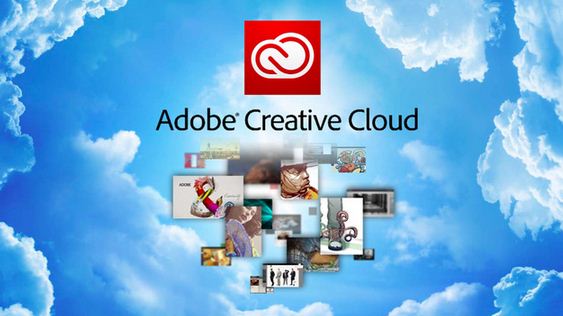Why It Might Work
Given that Adobe isn't the only one heading
down this direction, clearly some research has gone into this to convince it
that this is a viable proposition. Those that support the license model over
the ownership one would point out that Steam is a successful business where the
customers never get to actually own anything, though they buy access to
software products on there.
The issue there is that in general these
are single investments, and you're not required to pay a retainer to Steam in
the future to have access to the game you bought. A better comparison would be
the Sky TV franchise, where you pay each month to have access to the
programming, even if you choose not to watch it.
That said, most of the programming on Sky
isn't exclusive and can be accessed elsewhere, so it's not like there isn't any
choice.
What those who like the Adobe Cloud model
rightly point out is that it does open the avenue for these solutions to be
available on systems other than the Windows and Mac platforms. A future version
that's inherently web based could enable tablet-based use, and it also spreads
the capability to Linux computers at the same time. The separation of product
and platform might not sound ideal from Microsoft's perspective, but it places
Adobe in a better position to ride out what changes are happening in the PC
sector.

What
those who like the Adobe Cloud model rightly point out is that it does open the
avenue for these solutions to be available on systems other than the Windows
and Mac platforms. A
Also, the ability to sync across devices
and platforms is an attractive one, as a photographer can return from a shoot
to find the pictures he took are immediately ready for editing, for example.
However, it's worth noting that at the time of writing, this specific feature
of the Cloud service is currently broken and due to have the code behind it
replaced to get it working again.
What amazed this writer is how little of
what is in the Creative Cloud editions has anything to do with the cloud or any
of the functionality that suggests. As with many things, the theory sounds
good, but the reality might be much less desirable. At this time, the
additional functionality the cloud bit provides is largely unproven and thereby
reveals the true purpose of these changes.
The cost of going to CC is marginally less
than the bought model if you insist on upgrading each time Adobe releases a new
suite. However, once it has everyone on the subscription model, then it's free
to make the price whatever it wants.
Why It Might Fail
To say that this is an extreme course is an
understatement, and those who use Adobe products have already been very vocal
about their dislike of the scheme.
It wasn't long before a petition got
started asking Adobe to eliminate the mandatory Creative Cloud subscription
model. At the time of writing, 28,123 people had signed in support, with the
number increasing more rapidly than those signing up to Adobe's new service.
Most of those most vehemently opposed to it generally point out that Adobe did
this for its own benefit, not those that use its software, and while Adobe has
defended the move, it's done little to contradict that basic tenet.
It's also got no come-back to those that
point out that if the CC model is so good, then it would succeed if CS
continued alongside it - something Adobe doesn't seem keen to test.
What's most interesting is that Microsoft
also wants to embrace this concept, probably for the same reasons, but it's not
quite as brazen as Adobe.
A blog entry by Microsoft Office director
of communications Clint Patterson said, "Unlike Adobe, we think people's
shift from packaged software to subscription services will take time."
That's Redmond code for letting Adobe stick its head in the bucket of bees
first, before Microsoft has a try.

What's
most interesting is that Microsoft also wants to embrace this concept, probably
for the same reasons, but it's not quite as brazen as Adobe.
With money tight and businesses trying to
hammer down costs, this might not be the best time to introduce the new pricing
model, and Adobe might regret the number of users it'll convince to go
elsewhere. But where this is a gamble for Adobe, it also might be a huge
opportunity for the likes of Corel and others.
Final Thoughts
I'm going to lay the blame for these at the
feet of Apple, even if Adobe is the company whose decision this is. Why?
Because it's been the business that has taken the view that customers will do
as they're told, and it's success has fuelled the notion that corporate
business has been too keen to pander to their whims when it should have been
telling them the way it's going to be!
That's a pretty scary notion, because what
you're effectively doing is storing resentment in those people who have the
ultimate say over the success or failure of the business, and that can't be a
good thing ultimately.
What we've got here is a schism developing
between the notion of ownership and the providing of services, where Adobe has
decided that its products are services, because that seems to solve some of its
cash flow and revenue problems. It's not that they're services; they're
software tools, but they're now software tools that you now only ever rent and
not own.
The reaction to these announcements, as one
might reasonably expect, was hostile, because what it's effectively doing is
dictating to the customer that they spend with Adobe, even if they don't want
to. With the old model you could miss out a release, choosing to avoid CS5,
then jumping back in with CS6, spending when you could afford to and could
justify the upgrade. With the new model you must pay even if you don't want any
of the new features that are coming, and you pay for software you don't even
use, and you must keep on paying indefinitely or you'll lose access to your
files.

With
the old model you could miss out a release, choosing to avoid CS5, then jumping
back in with CS6, spending when you could afford to and could justify the
upgrade.
I could be wrong, but I read this as a huge
incentive to extract yourself from the clutches of Adobe and find any other
tools that will provide the features you use and handle the file formats that
you need. It's like Adobe woke up one day and said, "You know that guy who
occasionally buys Photoshop? We don't need him."
The problem with that is that there are
lots of people who use Photoshop and upgrade only occasionally, because it's
not cheap, and their money is as useful in the Adobe coffers as anyone else's.
However (and this for me is the killer),
Adobe has forgotten that its fiscal problems are exactly the same ones that
most big businesses have that use its products. What its accountants dislike
most is monthly or yearly bills that gnaw away at the cash flow and can't be
stalled.
They like one-off costs that can go against
a budget and can be put off for a year or two when times get lean, like they
are now.
Confronted with the potential for a new
monthly charge that wasn't budgeted for, what are they going to do? They'll ask
if CS6 isn't good enough for the time being or demand that alternative bought
software is found.

Adobe
has forgotten that its fiscal problems are exactly the same ones that most big
businesses have that use its products.
When I consider all this, I've come to the
conclusion that Adobe would like to be a much smaller company, employ less
people and have far fewer customers. And if it insists on pushing this through,
it may well get its wish.